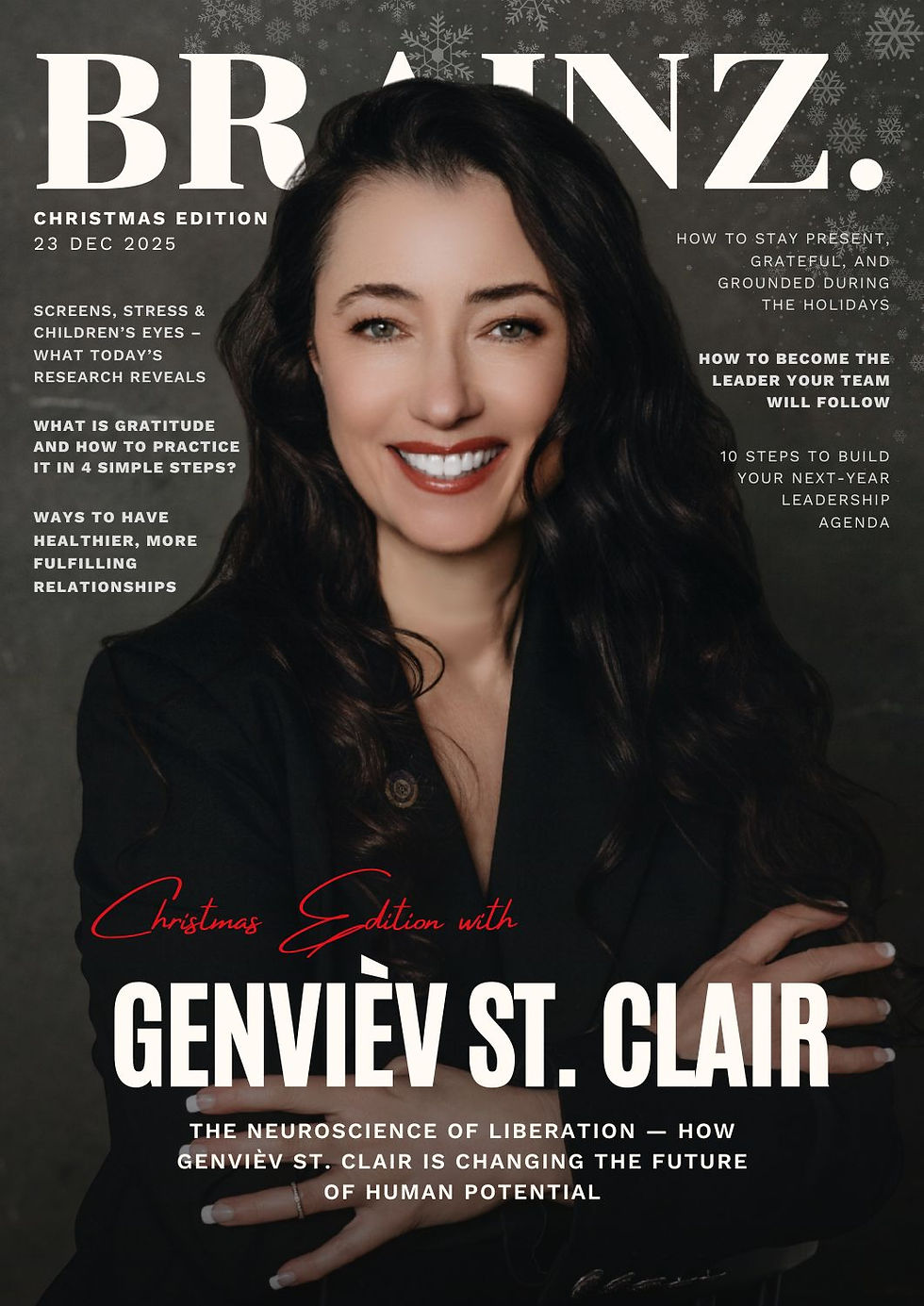How to Build High-Intent Marketing Funnels in Regulated Financial Markets
- Brainz Magazine

- May 12
- 5 min read
Updated: May 14
Dr. Sunaina Shrivastava, an accomplished marketing leader, is a Faculty of Business & Consumer Behavior at New York University and CEO of YellowFryum Inc., a premier New York–based advisory firm delivering innovative, data-driven growth marketing solutions across the financial services, fintech, healthtech, and medical aesthetics sectors.

Most fintech founders will tell you they’ve run paid ads. Fewer can tell you where their best leads actually came from. And almost none can explain why half their ad budget disappears with no ROI, especially when regulations like FINRA impose strict guardrails on messaging, disclosures, and targeting.

In financial services, you're not just building a funnel - you’re building a compliant digital experience for a new kind of investor. Today’s investors are more skeptical, more informed, and have more tools at their fingertips than ever before. They don’t tolerate fluff, don’t fall for urgency tricks, and expect instant clarity. That means the old playbooks of broad audience targeting and generic landing pages simply don’t work anymore.
This article breaks down what makes a high-intent funnel actually work in a regulated, high-trust environment and how modern financial brands can convert attention into action without crossing any compliance lines.
The compliance trap: Why traditional funnels don’t work in finance
Most digital marketing funnels rely on emotional copy, urgency triggers, and frictionless CTAs to push a lead down the pipeline. But in financial marketing, FINRA guidelines restrict claims, limit performance language, and require transparent disclosures. This fundamentally changes the rules of the game.
Ad platforms like Meta and Google already limit language around returns, guarantees, and targeting by income or financial status. When you layer in compliance, many typical funnel strategies become ineffective or risky. The result? Vague, uninspiring messaging that fails to convert.
Instead of repackaging the same tactics, financial brands must design funnels from a different lens - one built around compliance, clarity, and trust.
Investor behavior has changed – Your funnel needs to catch up
Investors today are not just savvier – they’re faster. They research, compare, and engage on their own terms. They’re accustomed to seamless digital experiences and high-value content that educates without selling.
The role of the funnel has evolved. It’s no longer just a pathway to purchase – it’s a trust-building engine. That means brands must:
Offer upfront value instead of quick sales pitches.
Use educational content that is both compliant and genuinely informative.
Include smart micro-conversions, like downloadable tools or explainer videos, to track real engagement.
What high-intent actually means and why most funnels miss it
Too many marketers treat any form fill as success. But real high-intent leads behave differently. They spend time consuming content, they revisit pages, and they engage with credibility signals like testimonials and case studies.
High intent is revealed through behavior, not just clicks. A compliant funnel should be designed to surface this intent clearly, and nurture it with thoughtful next steps that feel natural, not pushy.
The anatomy of a FINRA-aware funnel that converts
A successful growth marketing funnel in financial services needs to do three things: educate, assure, and convert – all without breaking rules.
Start with awareness. Offer gated content such as “How to Choose a Financial Advisor” or risk guides that provide genuine value. This gets the right people into your funnel and sets the tone for transparency.
Next, build engagement through useful tools like calculators or interactive checklists – all with built-in disclaimers and clear disclosures. UX matters here. Trust badges, advisor credentials, and even color choices can reinforce a sense of professionalism.
Finally, drive conversion with tiered CTAs. Not everyone is ready to book a call. Some may prefer to download a checklist or subscribe to insights. Use simple forms and make your privacy terms prominent.
Tools and tactics that work without breaking rules
Being compliant doesn’t mean being outdated. You just have to be intentional. Start by focusing on first-party data - track behavior directly through your site rather than relying on third-party platforms. Use server-side tagging for privacy-first tracking and better attribution.
Automated nurture sequences can do the heavy lifting, provided the content is FINRA-reviewed. These emails can extend your funnel’s value without adding risk.
And when it comes to segmentation, ditch assumptions. Base your targeting on real behaviors: pages viewed, tools used, or emails clicked. This is not only more accurate – it’s also more compliant.
Understanding today’s financial investor and why one message doesn’t fit all
Today’s investors are driven by information, reassurance, and transparency. They are increasingly diverse, from first-time retail investors to seasoned professionals, from passive index followers to active crypto traders. Each segment comes with its own expectations, biases, and risk tolerance, which means a one-size-fits-all funnel simply doesn’t work.
Your communication strategy must adapt based on the psychological profile of the investor you're targeting. While some need education and trust-building, others seek authority and proof of performance. Almost all expect digital experiences that are seamless, jargon-free, and respectful of their time.
To connect meaningfully, your funnel should:
Clarify what you do and why it matters, in plain language.
Use soft CTAs like “See if we’re a fit” instead of aggressive calls to action.
Integrate proof points naturally, such as visuals that explain your process, credentials, or expert commentary.
Customize value propositions — different messages resonate with retirees, Gen Z investors, or institutional buyers.
Maintain psychological safety by avoiding fear-driven tactics and emphasizing transparency.
Modern investor psychology demands more than persuasion — it requires empathy, segmentation, and clarity.
What most firms get wrong (and how to fix it)
Firms often launch ads before their funnel is ready, assuming traffic will solve everything. It won’t.
Other missteps include misaligned messaging, slow load speeds, or asking for too much too soon. Funnels that convert well are streamlined, consistent, and optimized for ease.
The solution? Start with strategy. Know the outcome you want and build backwards. Launch only when your funnel is tested, clear, and compliance-approved.
How we do it at YellowFryum Inc.
At YellowFryum, a New York–based growth marketing firm specializing in fintech and financial services, we engineer digital marketing funnels with the end goal in mind — starting from conversion and working backwards. Our approach blends behavioral science with compliance expertise to design high-performing, FINRA-aligned journeys. With a growth marketing strategy tailored specifically for regulated sectors like fintech and asset management, we don’t follow templates — we build frameworks that convert, earn trust, and stand up to scrutiny.
Our team includes business school professors, marketing PhDs, and industry specialists in investor behavior, allowing us to bring academic rigor, data-backed insight, and industry fluency into every client engagement.
Conclusion
Funnels in regulated industries can’t rely on tricks – they must rely on trust. It’s not about shouting louder. It’s about speaking smarter.
If you're a fintech or financial brand looking to turn attention into action with a funnel that’s both high-performing and fully compliant, we’d love to help. Reach out at shrivastava@yellowfryum.com or book a call directly at this link.
The right funnel doesn’t just convert — it convinces.
Read more from Dr. Sunaina Shrivastava, BEng., MBA, PhD
Dr. Sunaina Shrivastava, BEng., MBA, PhD, Professor @ NYU & Marketing Leader
Dr. Sunaina Shrivastava is a distinguished academic and business leader specializing in Behavioral Marketing and Growth Strategy. She serves as a Faculty of Business & Consumer Behavior at New York University (NYU), with research published in leading academic and business journals. Dr. Shrivastava is the Co-founder of YellowFryum Inc., a premier New York–based advisory firm with two verticals: YellowFryum Fin, accelerating growth for fintech & financial services, and YellowFryum Med, driving growth in the medical aesthetics & healthtech sectors through cutting-edge digital marketing solutions. She holds a Ph.D. in Marketing from the University of Iowa, an MBA in Marketing, and a Bachelor's degree in Electronics Engineering.










.jpg)